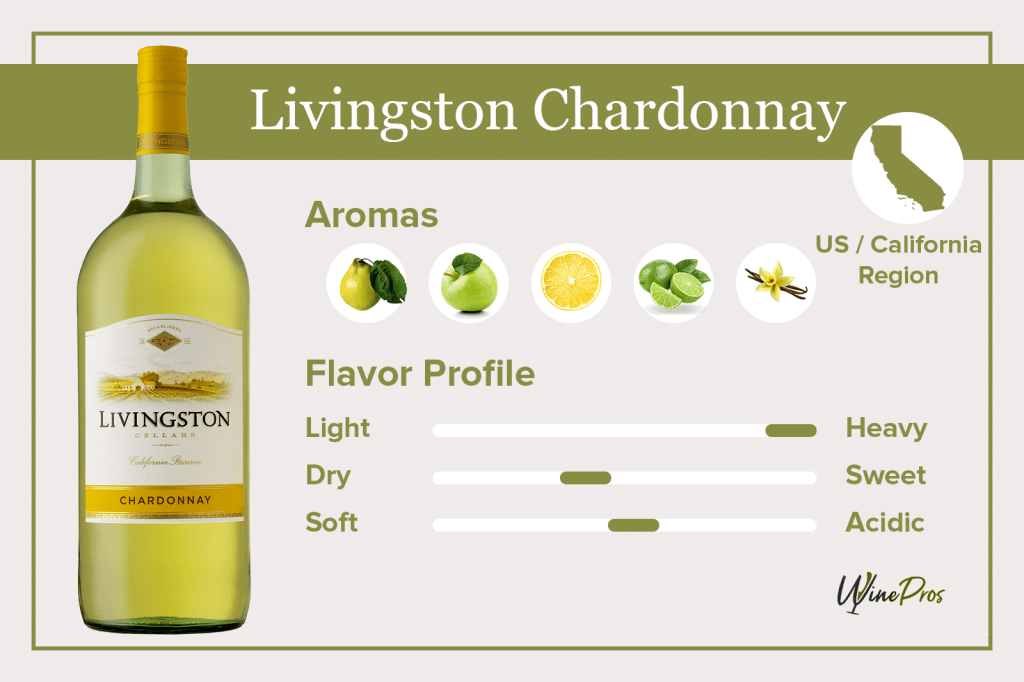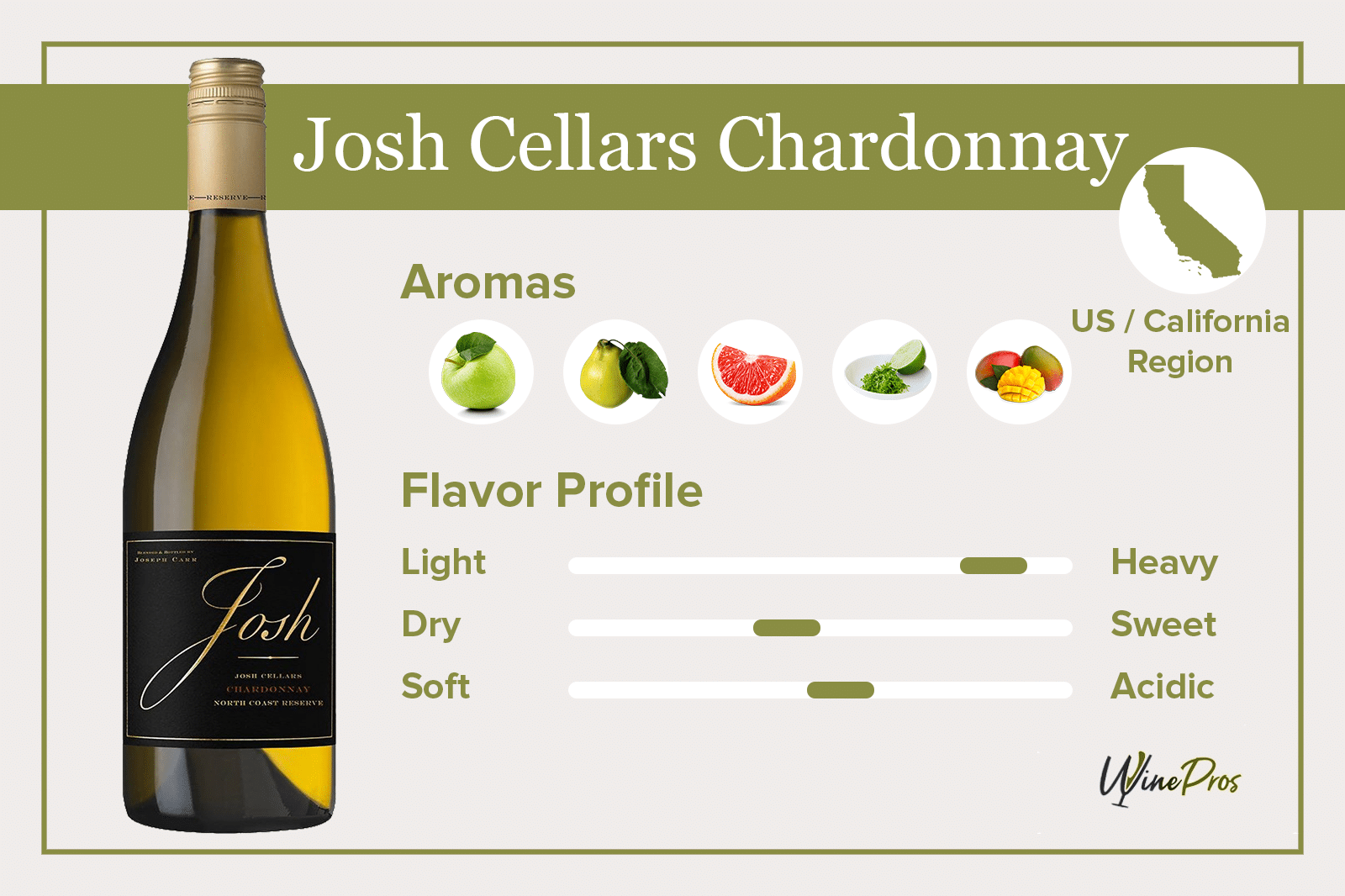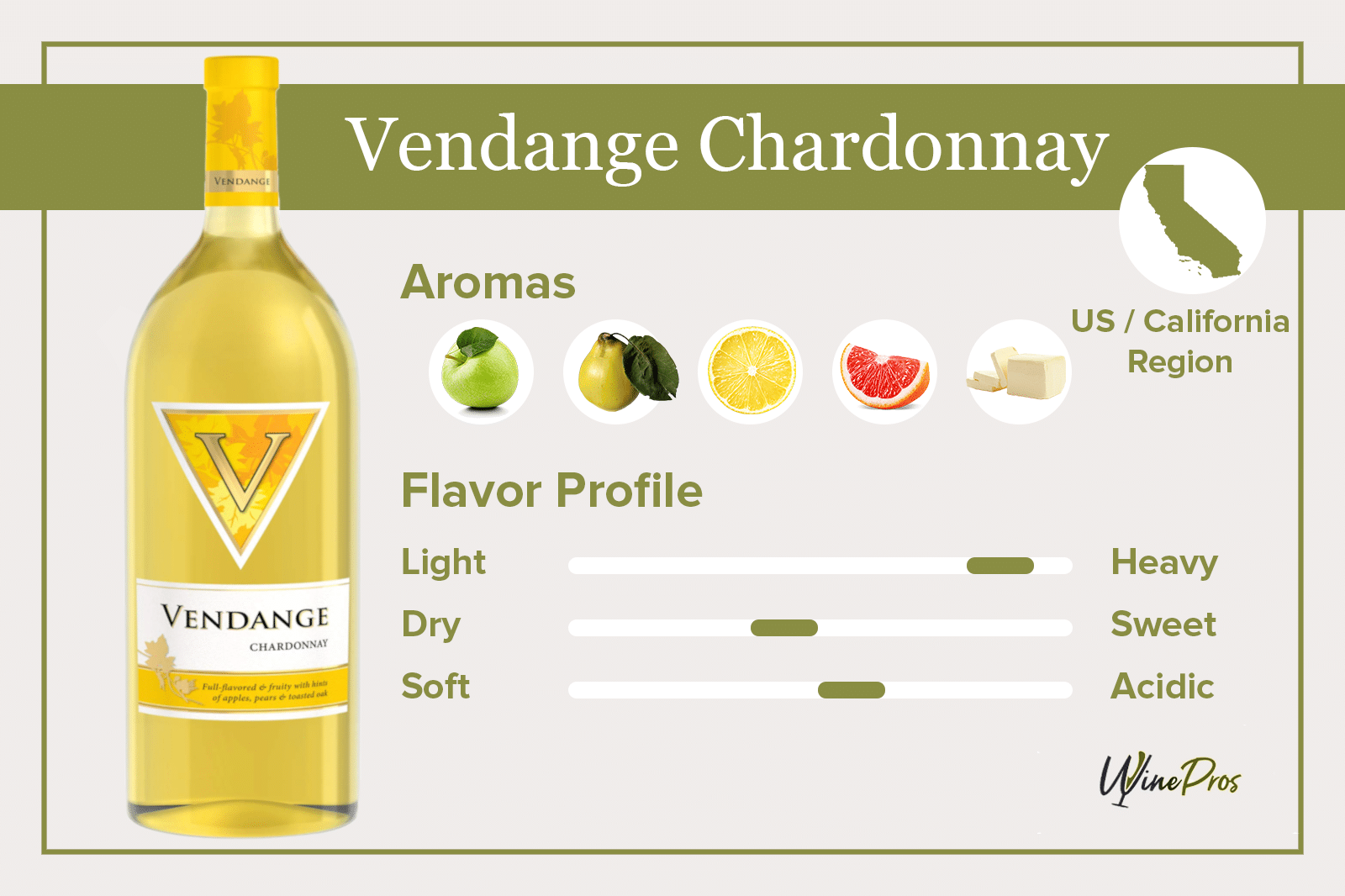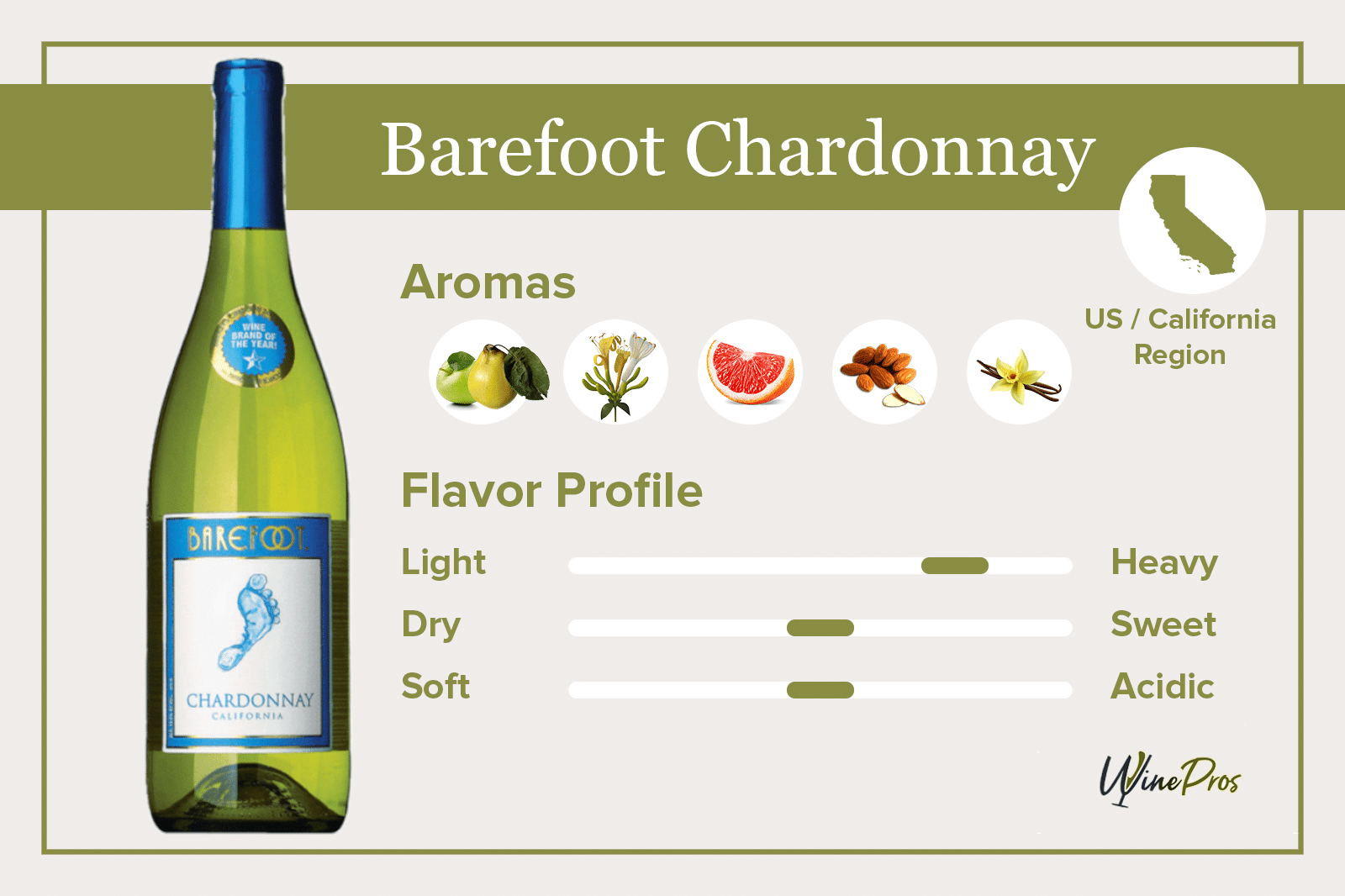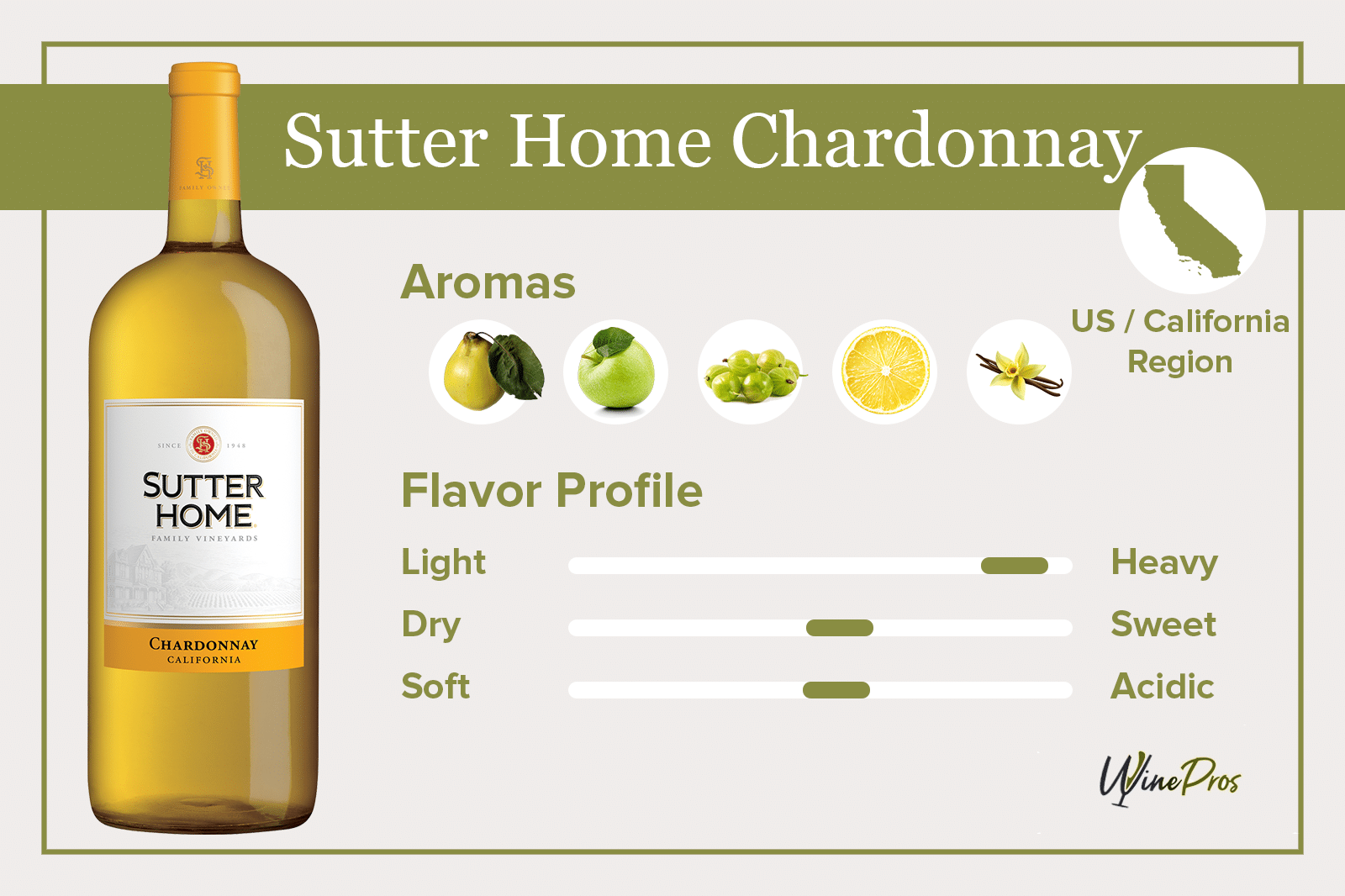What Kind of Wine Is Livingston Chardonnay?
Livingston Chardonnay is a crisp and refreshing dry white wine from Modesto, California. Fresh apple and pear define the nose, as pineapple and melon flavors dominate in the mouth. The wine is well-balanced and enjoyable. It has a smooth and clean finish. Chardonnay, as a varietal, is versatile and can be grown without challenge in many climates. It is early budding, which means that it suffers in areas with spring frosts.
When it comes to moderate and cool climates, Chardonnay showcases flavors of green fruit and citrus, such as apple, pear, Meyer lemon, lime, grapefruit, and lime zest. However, in warm areas, like California or Oregon, juicy tropical fruit flavors are fairly typical. Chardonnay can undergo several wine-making techniques. Basically, it can be molded to a winemaker’s desire. Chardonnay wines display a range from unripe fruit flavors to intricate secondary and tertiary aromas of nuts, mushrooms, and honey. In New World wines, the Chardonnay style depends entirely on the winemaker. Consequently, many are oaked or completely fresh, like Livingston Chardonnay.
Livingston Chardonnay Review
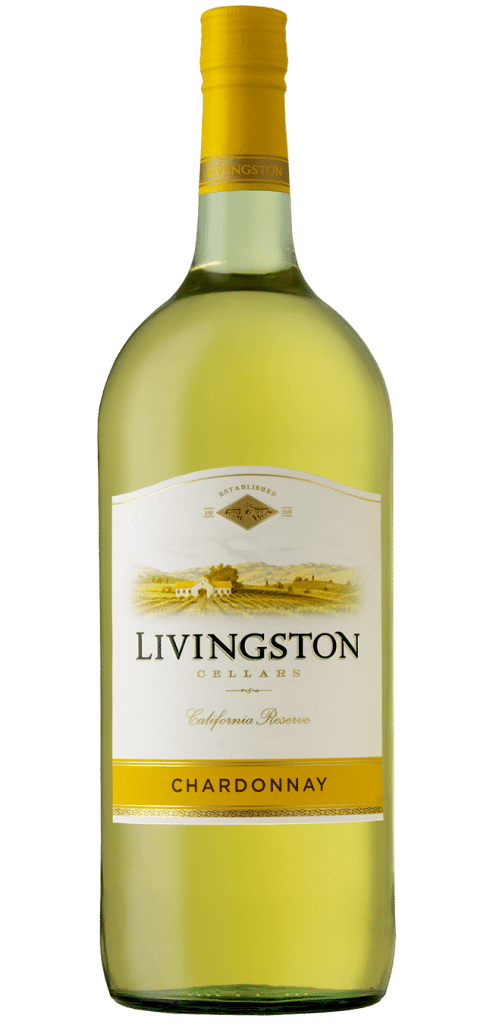
- Winery — Livingston Cellars
- Country/Region — United States, California, Central Valley, Modesto
- Type — Californian Chardonnay
- Aroma — Pear, Apple, Lemon, Lime, Vanilla Spice
- Grapes — Chardonnay
- Taste — Pineapple, Melon, Banana, Grapefruit, Passion Fruit, Orange
- Alcohol Content — 12%
- Sugar — Dry
- Pairing — Marinated Rosemary Chicken, Almond-crusted Halibut, Goat Cheese, Sushi
Livingston Chardonnay is a good bargain of white wine. It is smooth and so easy to drink. Even though it is intentionally light-bodied, it remains enjoyable throughout the tasting experience. Livingston Chardonnay is full of happy notes of pear, citrus, and pineapple that make it both well-balanced and remarkably approachable. For everyday wine, it is unbeatable.
Tasting Notes
Livingston Chardonnay wine is very tasty. And while it is not the most complex Chardonnay ever created, it does make a fantastic everyday wine. The nose gives green and citrus fruits, while the palate offers ripe flavors of exotics. Since Livingston Chardonnay is a fruit-forward wine, it has little to zero oakiness and, as such, minimal creaminess. That is not concerning, as the acidity is so lively that it makes up for the loss of structure. The wine concludes the tasting profile with an ultra-clean finish.
Appearance
Livingston Chardonnay starts with translucent lemon-green color, almost like lime juice, and opens into a super clean core. Next, on the sides, a pale lemon hue develops. The tears of the wine are short and watery. Livingston Chardonnay, therefore, has a delightful appearance. It is good-looking, with a fresh, bright spirit.
Aroma
Livingston Chardonnay is filled with aromas of green fruits and citrus. Pear and apple join lemon and lime as they create an undeniably youthful nose. That freshness is balanced by a hint of vanilla spice, which adds a well-needed depth. Nevertheless, Livingston Chardonnay has a pleasing aromatic profile, even though it leaves you wanting a tiny bit more structure.
Taste
Livingston Chardonnay is a bit riper in the mouth than on the nose, but nothing extreme. Flavors of pineapple and melon provide tropical notes, while a hint of grapefruit preserves the citrus nature. Livingston Chardonnay also displays a crisp acidity that refreshes the mouth. A very straightforward palate, without unnecessary complexity.
Finish
The wine closes the tasting profile with a clean and lengthy finish. So, do not expect to see creaminess or sweetness lingering. Instead, be appreciative for the citrus ending with delicate hints of passion fruit and orange. Livingston Chardonnay retains its light character, remaining pleasant to the end.
Rating
Personally, I would recommend this Chardonnay to consumers on the lookout for a refreshing everyday wine. With its crispy citrus personality, Livingston Chardonnay satisfies those wanting an easy-going beverage. Something with a simple structure. Livingston Chardonnay, therefore, excels as a value-for-money wine and a well-balanced white without boring elaborateness. It is great.
Livingston Chardonnay Food Pairing
Livingston Chardonnay goes well with a whole host of poultry and fish. A juicy marinated rosemary roast chicken or an almond-crusted halibut make a perfect combination when combined with this Chardonnay. The pineapple and melon flavors accompany the crispiness of the chicken skin. Likewise, the wine’s citric-nature complements the flatfish.
Also, try Livingston Chardonnay together with goat’s cheese. You will be astounded. Creamy white cheeses create a superior combination with the rich, buttery structure of Chardonnays. They come together in an incredibly seamless way. Furthermore, when you don’t feel like cooking, try Livingston Chardonnay with Sushi. Japanese cuisine, generally, is very friendly to light, easy-going white wines.
Frequently Asked Questions
Who Makes Livingston Chardonnay?
Livingston Chardonnay is a proprietary label of Livingston Cellars, located in Modesto, California. Livingston Cellars produce versatile, fruit-forward wines, perfect for bringing friends and family together. On top of that, their wines are award-winning and easy-to-enjoy. They are offered at an affordable price-point.
Livingston Cellars belongs to E. & J. Gallo Winery, a leading wine producer and importer in the United States. Founded in 1933, E. & J. Gallo is the world’s largest family-owned winery and the largest exporter of California wine, with an extensive wine portfolio.
How Is Livingston Chardonnay Made?
Livingston Cellars Chardonnay is crafted by following the classic wine-making method. After harvest, the grapes are de-stemmed and crushed. Crushing breaks the skins of the grapes and liberates a quantity of juice. But damaging the seeds should be avoided. If seeds are crushed, they release bitter oils and tannin, and the wine might become astringent and bitter. After crushing, follows the pressing of the grapes. Pressing separates the liquid and the solid constituents of grapes. Seeds should remain undamaged once again.
The released juice is taken to the winery and is clarified to preserve pure fruit flavors. Afterward, it is placed inside stainless steel tanks to undergo cool fermentation. At this point, the malolactic conversion might take place. This process is responsible for giving creamy structure to Chardonnays, as well as toasted bread notes. Therefore, the malolactic conversion enhances white wines, increasing their structural components. When the fermentation is over, the final wine is filtered from sediments and bottled.
Where Is Livingston Chardonnay Made?
Livingston Cellars is made in California State, where the Mediterranean climate showers the vines with warmth. Chardonnay plantings flourish among the cooler coastal zones of the region. There, combinations of warm and cool influences from the Atlantic Ocean and fog favor a vast range of inexpensive and premium wine styles, with concentrated flavors and moderate acidity.
Some of the most successful wines in the United States are Californian-made. The region is the heart of the American winemaking industry, with its state-of-the-art wineries. Contrary to wines produced in different parts of the world, California wines preserve their fruit-forward nature. And that makes them compelling.
How to Serve Livingston Chardonnay?
Like most white wines, Livingston Chardonnay is served best in regular medium-sized glasses. The large surface of the glass provides the wine with the essential aeration. As the air comes into contact with the wine surface, the aromas and flavors concentrate and elevate. In this way, the crisp citric-nature unearths, celebrating the Chardonnay varietal in all of its glory. On top of that, Livingston Chardonnay requires chilling at fifty to fifty-four degrees Fahrenheit (ten to thirteen degrees Celsius).
To keep Livingston Chardonnay refreshing, you must ensure that it stays cool during serving. To do this, use an ice bucket or wine cooler. The bucket should be filled three-quarters full with equal quantities of ice and water so that iced water surrounds the bottle. The water is then able to transfer the heat from the bottle to melt the ice. Air acts as an insulator, and the bottle chills. That said, be careful and do not over-chill the wine. Otherwise, the flavors of Livingston Chardonnay become thin, almost empty.
How Much Does Livingston Chardonnay Cost?
Marketed as a table wine, Livingston Chardonnay should not be expensive. For this reason, it has a super approachable price-point. Livingston Chardonnay prices range from $5 to $11 per 1.5L bottle. As a consequence, the wine is available at the lowest price possible. Consumers should obtain it if they feel like having a nice, versatile white that accompanies most dishes and many cuisines.
How Long Does Livingston Chardonnay Last?
Livingston Chardonnay cannot benefit from bottle aging. It is too fruit-forward, without the slightest indication that it can withstand maturation. It does not have high alcohol or sugar concentration or, to put simply, Livingston Chardonnay is not structured enough for aging. It is meant to be consumed young, within six months from the date of bottling. The longer Livingston Chardonnay remains uncorked, the greater the decay of its fresh citrus character. So, consumers act accordingly.
How Many Calories Does Livingston Chardonnay Have?
Livingston Chardonnay has a good caloric-density, which constitutes it a solid daily wine choice. There are about 25 calories in 1 fluid ounce of the beverage, amounting to 125 calories per serving. The calorie breakdown is 0 grams of fat, 10 grams of sodium, 4 grams of total carbohydrate, 0 grams of protein, and 1 gram of total sugars. Consequently, Livingston Chardonnay calories are low and will not drive dietitians crazy. That said, consumers monitoring their sodium-intake perhaps should pass this wine.
Livingston Chardonnay alcohol content is 12% per 750ml bottle, a regular alcohol concentration for a Californian white. As with most wines, Livingston Chardonnay is not vegan. During winemaking, wines are clarified through a process called fining. The most commonly fining agents are animal-based. Vegans, therefore, should consider that before having a sip.
Conclusion
Livingston Chardonnay is a good bargain of white wine. It is smooth and so easy to drink. Even though it is intentionally light-bodied, it remains enjoyable throughout the tasting experience. Livingston Chardonnay is full of happy notes of pear, citrus, and pineapple that make it both well-balanced and remarkably approachable. For everyday wine, it is unbeatable.

